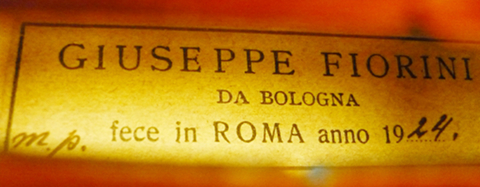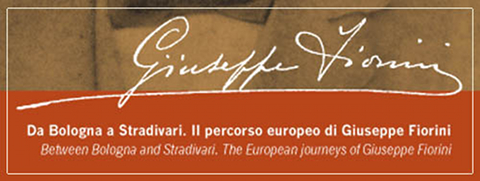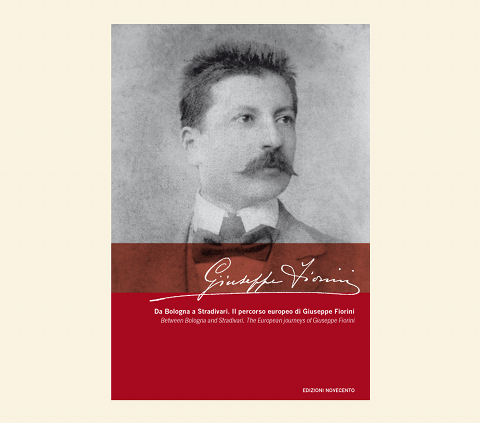FROM BOLOGNA TO STRADIVARIUS - GIUSEPPE FIORINI'S EUROPEAN PATHOne of the greatest craftsmen of his time, who has dedicated his whole life to research and training. To him, who donated his collection of all tools, drawings, and shapes by Antonio Stradivari to the town of Cremona, we owe the birth of the Violin Making School and the Stradivarian Museum. His Bologna as well as Cremona commemorate him in his 150th anniversary since his birth with a series of events, including the exposure of his quartets in Cremona, promoted by his "spiritual students", as M° Roberto Regazzi writes and sponsored by the CNA of Bologna. To Roberto, a worthy heir, the task to introduce the Master Luthier Giuseppe Fiorini. Giuseppe Fiorini at 31 years The story of Giuseppe Fiorini Son of an artist, born in 1861 at Bazzano, after an apprenticeship in his father Raphael's shop, in 1885 he opens a separate workshop in Bologna. His keen and intuitive intelligence and the need for less confined spaces, let him move to Munich in a time when the whole city is a hive of excitement and artistic possibilities. By marrying a daughter of Andreas Rieger, known luthier and businessman at Mittenwald, he will soon become his successor in the Bavarian capital , and between 1895 and 1910 he establishes himself as one of the most representative figures of central Europe with regard to construction, expertise and marketing of quality stringed instruments. In 1904 he is a founding member of the German VDG, the oldest and longest European violin making associations -still active - and in those years in his multifaceted shop, he trains an increasing number of students and deals with the best musical artists of his time . Violin Giuseppe Fiorini - Rome 1924 With the outbreak of World War I, he was forced to take refuge in Switzerland (1915) and he seriously considers returning to practice in Italy, but it takes eight years for this to happen. Meanwhile he settles the transaction of his life: the purchase by a noble family of Piedmont of all the tools, designs and shapes that Antonio Stradivari had used in life to build his famous masterpieces. Although Fiorini had known this material already since 40 years, having studied it and had already drawn inspiration for his successful career, this episode marks a further leap in professional quality , which finally opens his Italian period, when he moves to Rome in 1923. Here he trains other students pursuing the idea of establishing a real school, by which joining the Stradivarian treasure, that he is ready to donate just to reach the goal of the rebirth of the great Italian violin makers. Times are difficult and the health of its eyes is suffering from an incurable disease, but at the end Cremona accepts his donation in 1930, only four years before going off into silence in Munich , Bavaria Original label Giuseppe Fiorini During his life, he dealt with a great number of artists and was much loved and respected during his time also by a large number of German, Italian, Swiss students and more. Thanks to his personal and professional charisma, his influence on the culture of the modern violin has gone far beyond the consequences of the donation to Cremona. A witness of it is the successful career of, at least, two luthiers who have attended him over the years of maturity: Ansaldo Poggi and Simone Fernando Sacconi, this latter a forerunner of American lutherie. The formative presence in the early years of the last century of also a member of the Hill family in London proves the great consideration that the Master had been able to earn immediately in his environment. He was a friend of all arts and his writings tell us of his great erudition, subtlety and intelligence. Today his instruments have stood the test of time and begin to be appreciated and played regularly by the most demanding musicians. The fact that he was unable to have "blood" heirs makes his figure likely to attract to himself a lot of spiritual students. For more information on all events visit the website by clicking on the banner: The Exhibition Catalogue Verena Baumann So long Paolo
|
   |








